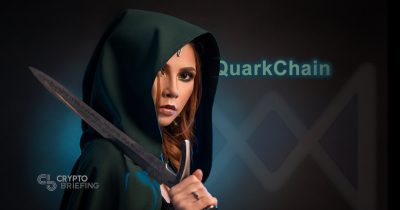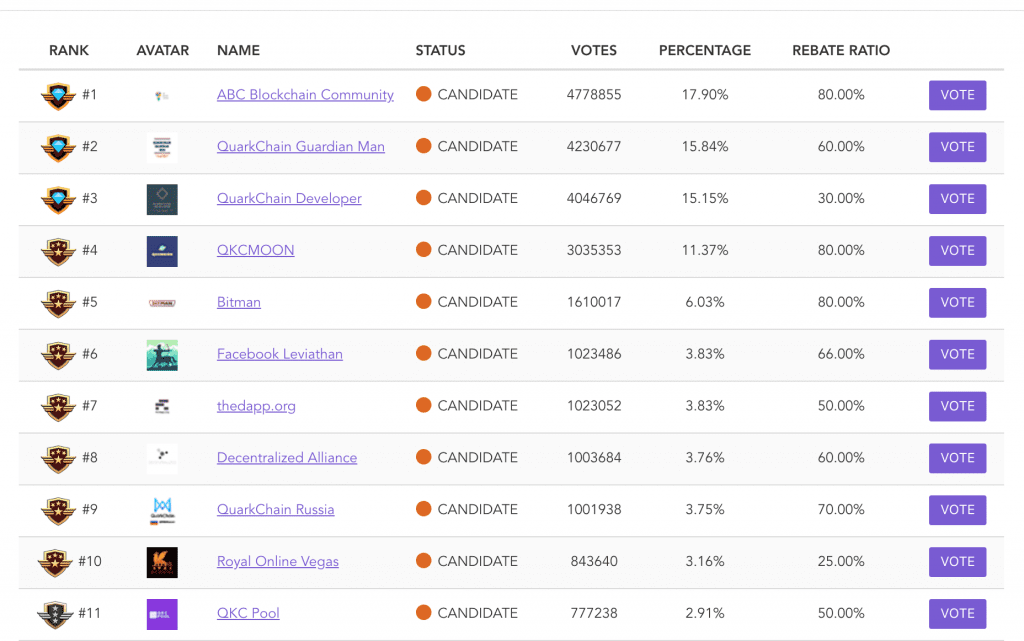This One Goes Up To Elven: QuarkChain Mainnet Needs Guardians
Capes not included.

Share this article
If you’ve got a magic wand and pointy ears, there might be a job opportunity for you—on the blockchain, that is. QuarkChain, a protocol that uses sharding for high speed and maximum scalability, is launching their mainnet at the end of this month… and they’re looking for “Elf Guardians” to keep their network secure.
It may sound like a cross between Tolkein and a Marvel movie, but QuarkChain says that these guardians are no joke. In exchange for their role in securing the network, the protocol has structured incentives to reward guardians for their participation, with annualized returns of up to 300 percent.
Running For Elf And Safety
As the network matures, QuarkChain’s root chain will be secured by a “Proof of Staked Work” consensus algorithm, requiring both hash power and collateral to run a node.
But the blockchain will still be vulnerable after it launches. As QuarkChain explains in the “Guardian Plan:”
And they want you to apply, unless you happen to be in the United States, Serbia or about two dozen other countries for which the guardians program is off-limits. Indeed, you can’t even view the voting results from these countries.
Everyone else is invited to apply or vote for the “Elf Guardians,” the community members charged with securing the network. At present there are around sixty candidates, fifty of whom will be able to receive staking rewards by running a node for a two-month period.

Aspiring elves need only agree to QuarkChain’s vision, stake some tokens, and tell voters what they will do to improve the community, explains Quarkchain CMO Anthurine Xiang. Most candidates, she added, also promise to distribute the Guardian rewards among their supporters.
A second group, “Aegis Guardians” will be chosen directly by the QuarkChain project, in exchange for staking 10 million QKC. However, the number of Aegis Guardians has not yet been decided.
How QuarkChain is different
Assuming the Guardians complete their task, QuarkChain’s mainnet will eventually become self-sustaining. However, it’s not the only blockchain protocol with a high-speed scaling solution.
“QuarkChain is very different,” explains Anthurine Xiang, not only from other sharded blockchains but also from not-sharded ones. Whereas most public chains are built with fixed infrastructure, QuarkChain’s is designed to be flexible.
Each public chain, she explains, is determined by certain fixed characteristics, such as the consensus algorithm, or tokenomics. EOS, for example, has unique advantages which are determined by the delegated proof-of-stake model, the interactions of RAM and CPU resources, and other features, just as NEO or Ethereum have their own unique dispositions.
“Each combination determines their attitude for the future,” Mrs. Xiang explains. But that’s not the case for QuarkChain, she says, each shard of which can integrate different virtual machines, transaction type, consensus algorithms or other features. “Every time we add new shards, it can always be a unique combination,” she explains. “You can use whatever you want for new shards.”
The allows every new token to act like a native token in QuarkChain, with any characteristics they want. After the mainnet is launched, the next likely steps are to integrate dPOS and Privacy shards.
Privacy will be a top priority, allowing seamless private transactions without having to exchange for another token. “Once we have a privacy shard, every coin in the QKC network will have a privacy function,” Mrs. Xiang says. “Every time we add a new function to the whole infrastructure, all the other tokens will have the same function.”
This feature is expected to make QuarkChain attractive to enterprises, since each shard can be easily customized for business adoption. “Right now we’ve already signed the contracts to build real blockchain solutions for some big companies,” Mrs. Xiang said. Although she could not reveal their names, she estimates that QuarkChain has around seventy enterprise partners.
That could be a big advantage compared with other blockchains, which have fixed infrastructure. “All public chains have the same problem,” Mrs. Xiang says. “It’s really hard for them to adapt.” Ethereum, for example, is struggling to adapt to a proof-of-stake model, and other blockchains have fixed infrastructure. QuarkChain, on the other hand, is made to evolve.
Those are big promises, and it may be hard to take QuarkChain seriously when their plans revolve around Elf Guardians. However, serious scrutiny has shown that the project is not to be taken lightly, and last year Crypto Briefing’s code reviewers placed QuarkChain’s transaction-throughput potential as credibly reaching the tens of thousands of transactions per second.
While that’s no assurance of the project’s success, the amount of interest it has attracted from developers and enterprises means that QuarkChain is unlikely to fall off the radar anytime soon.
Share this article
